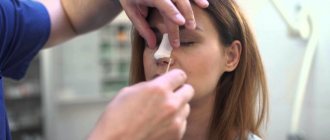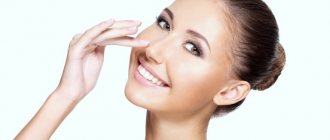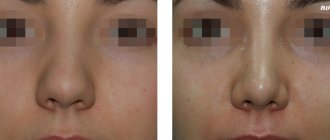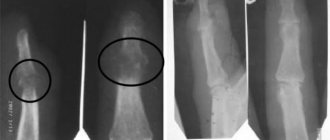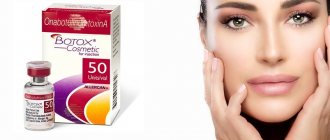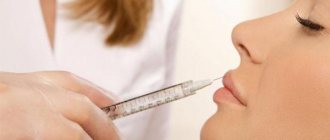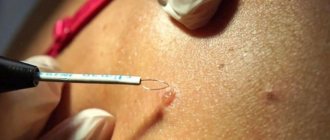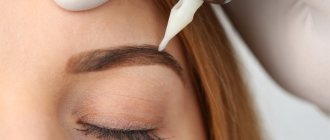Rhinoplasty is the most effective way to correct the nose, which allows you to correct a lot of imperfections. The result after the operation is quite long, as is the rehabilitation period. During recovery, certain problems may arise, for example, discomfort in the nose, difficulty breathing, and swelling. In this article, we will tell you the basic principles of care after correction and explain why to glue strips after rhinoplasty. We will provide reviews in which those undergoing surgery share the characteristics of the rehabilitation period.
What is rhinoplasty?
If the situation cannot be corrected non-surgically, you can resort to rhinoplasty of the nose. This operation, today, occupies one of the leading positions among facial plastic surgery. In Russia there are many clinics and experienced specialists who have been carrying out this procedure for a long time and successfully. Rhinoplasty of the nose is an operation aimed at correcting congenital and acquired defects of the nose. This procedure makes it possible to:
- make your nose smaller;
- get rid of the hump;
- narrow the wings of the nose;
- fix the so-called “potato nose.”
A little anatomy - what is the tip of the nose?
1 - nasal bone; 2 - frontal process of the maxilla; 3 - upper lateral (triangular) cartilage; 4 - lower lateral cartilage; 5 - cartilage of the nasal septum, 6 - small cartilage of the nasal wing.
The lower lateral cartilages are responsible for the shape and size of the tip of the nose. In all the drawings they are depicted as beautiful and even. However, in life, they are very different for each of us.
If the upper triangular lateral cartilage is a rather rigid structure with the nasal bone, then the lower lateral cartilages are fixed by soft tissues and ligaments - this is why the tip of our nose is so mobile!
With age, the ligaments weaken and the tissues droop, so the older the person, the lower the tip of the nose.
To understand the mechanisms of drooping of the tip of the nose, you don’t need much imagination - remember the image of Baba Yaga from the Russian epic. This is a typical example of age-related changes that affect everyone.
After operation
Rhinoplasty of the nose has several features. Due to the fact that there is very little soft tissue in the nasal area, preconditions for deformation are created. Even the most experienced plastic surgeon cannot one hundred percent predict the degree of tissue change after rhinoplasty. That is why rehabilitation after surgery has a long period and has a lot of prohibitions.
Important! It is on your complete trust in the doctor and the implementation of all his recommendations that how quickly and painlessly your rehabilitation will take place. Any mistake can reduce the surgeon’s entire work to zero. Violation of prohibitions can lead to revision rhinoplasty.
Since surgery involves surgical intervention into the bone structure, it is very important to ensure complete immobility of the nose during the rehabilitation period. After rhinoplasty, it is mandatory to apply a special plaster splint to the nose, and turundas will be inserted into the nostrils, which will block the passage between the pharynx and the nose. Turundas prevent blood from entering the throat and can significantly reduce postoperative tissue swelling. Tampons eliminate the possibility of nasal breathing, and for 2 days after surgery, the patient is forced to breathe only through the mouth.
Facial swelling after rhinoplasty: what are the causes?
During the operation, the surgeon peels away the skin from the cartilage and soft tissue to create a full surgical field and gain access. This manipulation is also necessary for the subsequent correct distribution of the skin in the desired position. Detachment of the skin necessarily damages the blood vessels, which naturally has a negative impact on the blood supply. It is this problem that is the catalyst for the occurrence of uncomfortable swelling.
The organization of the blood supply system in different layers of the skin is shown in the diagram: The outflow of blood is slower than the inflow. Therefore, the tissues swell, and the nose itself seems to swell. As blood circulation is restored, the swelling neutralizes on its own.
Stages of rehabilitation after rhinoplasty
The entire rehabilitation period after surgery is usually divided into 4 stages. Stage 1. Lasts 1-2 weeks. During this period, rigid fixation of the soft and bone tissues of the nose is necessary. For this purpose, a plaster cast and special hemostatic turunds are used. Patients complain of inconvenience when wearing a plaster splint: they cannot breathe or sleep with it, and the skin under the cast often itches. However, this procedure is absolutely necessary after rhinoplasty. The bandage will help protect the nose from mechanical injuries, securely fix the organ, and prevent displacement of cartilage and bone tissue. In order to avoid infection, the splint is impregnated with a special antiseptic liquid. 2-3 days after rhinoplasty, you can remove the tampons from your nostrils. This is a quick and painless procedure. However, the person operated on will still not be able to breathe freely. The swelling that forms after surgery makes breathing difficult. The swelling will last about a week; rinsing the nose with solutions will help relieve the condition.
Stage 2. It begins with the removal of the plaster splint and lasts up to the 1st week. Removing the plaster cast is also quick and easy. By this time, the swelling has practically gone away, and the plaster stays on its word of honor. Due to the fact that the bandage supported soft tissue, swelling may increase after removal. Don't be alarmed, this is a normal reaction of the body.
Important! Only your doctor can remove a plaster cast from your nose. Do not try to remove the plaster yourself, this may lead to irreversible consequences!
After removing the plaster, it’s time for postoperative sutures. It is important to continue rinsing your nose at this stage, as difficulty breathing can lead to sneezing and coughing. And this is extremely undesirable to do after rhinoplasty. If you have to sneeze, be sure to open your mouth, this will relieve pressure on the operated area. Among other things, rinsing the nose will help get rid of the crusts that form on the nasal mucosa. Stage 3. It will take from 2 to 2.5 months. This period is usually called cosmetic restoration. After rhinoplasty of the tip of the nose, the organ finally takes on the desired shape, and hematomas and swelling almost completely disappear. At this time, the nose is fixed with strips, which are strips of microporous adhesive tape. Your doctor will decide how long you will need to wear the strips. This depends on the degree of complexity of the rhinoplasty performed and how the patient is going through the rehabilitation period. Stage 4. It takes from 6 months to a year. During this period, the nose finally takes on the desired shape. However, during this period some unpleasant consequences of rhinoplasty may appear. Such as irregularities, asymmetry, scars. This is where physiological procedures come to the rescue.
Can the tip of the nose actually droop?
Yes, there is such a possibility. Moreover, quite a lot of patients report on forums that the tip of the nose can rise and fall and even take a different shape. What's the matter? After all, rhinoplasty is aimed at correcting defects. The drooping tip of the nose clearly does not fit into the idea of a “well-performed operation.” We don’t panic and don’t fix the situation with our own hands, because it’s not like fixing a chair - it requires delicate work, and a specialized specialist. We recommend that if such a problem arises, you contact the surgeon who operated on you. If this is not possible, then find another qualified doctor in this profile. Often, the opinion of an outside specialist often helps to dispel the doubts of many patients.
After the operation, the tip of the nose can “walk” for about another year and a half. This is explained by the fact that complete restoration, healing and shrinkage of the new form requires an impressive period of time. For the first couple of months, the surgical area will be swollen. Therefore, the tip will seem a little upturned. As the swelling subsides, the tip will also drop (by 3 mm on average over 6 months), and the nose itself will become sleeker and thinner. If the result is completely disappointing, then one of the following reasons is possible:
- When the primary and then secondary swelling subsides, the tip of the nose can drop down to 5 mm. Moreover, this will not necessarily be a defect after the intervention of a surgeon. These are completely natural processes of the body.
- If there was an open rhinoplasty, then dissection of the columella or excision of some part of it much more often leads to drooping of the nose.
- Complex operations, during which significant portions of bone, cartilage and soft tissue are excised, are much more likely to lead to drooping or even sagging of the tip of the nose. This often happens during operations involving complex deformities, injuries, or other unusual cases.
- Age also plays a huge role in this matter. In minors and patients abroad, no guaranteed results can be expected after 45 years. Moreover, the most unforeseen consequences of rhinoplasty may arise. Doctors associate these factors with the special structure of tissues with an unstable or depressed state. In such cases, the ability to regenerate can give any result.
- Removing a hump can also only visually lower the tip of the nose. But in reality it will be in the same place.
- It should not be ruled out that this was a planned result aimed at getting rid of snub nose.
- Gender also plays a role. Rhinoplasty in men is easier, and the consequences are rarely severe.
- We put the surgeon's mistake as the last point. This happens all the time, especially if the clinic and doctor were chosen hastily. What is most offensive in such a set of circumstances is that it is possible to correct what has been done, but at a higher cost (and much more) and only a year and a half after the last procedure.
So, as you can see, there are many reasons. But at first, as soon as you notice such a defect, you should contact the doctor who operated on you. Perhaps he can improve the situation in the right direction.
The importance of physiotherapy after rhinoplasty
During the postoperative period, a lot of restrictions must be observed. This list also includes many cosmetic procedures. But, there are those that are aimed specifically at the recovery of the patient after surgery. The procedures help restore tissue, reduce swelling and hematomas that occur after rhinoplasty. To alleviate the patient’s condition after rhinoplasty, physiotherapy procedures are intended, which include special massage. Such actions serve as prevention for the formation of callus after rhinoplasty.
Will the result suffer?
Will the result suffer? It is impossible to answer this question unequivocally. Much depends on the area of intervention. So, if a woman has undergone breast augmentation surgery, we can expect that after childbirth we will see more stretched scars. In addition, the implant will probably no longer fit perfectly in all respects. And if the patient has had her abdomen corrected, then we can definitely talk about risks.
Although there are many operations, the results of which will not be greatly affected by pregnancy. These include blepharoplasty, otoplasty, removal of Bisha's fat pads, rhinoplasty and many others.
Nose massage after rhinoplasty
It is important to know that in its usual form any massage after surgery is strictly prohibited. With active displacement of the soft tissues of the nose, the bone tissues, which after rhinoplasty are held exclusively by surgical threads, will also be affected. However, there is one complication after the procedure in which massage is simply necessary. We are talking about the appearance of a hump on the nose after surgery. It is a small cartilaginous compaction that can be easily eliminated with massage. The full course of therapy consists of three procedures.
How to properly massage after rhinoplasty
After the strips are deleted, you can perform the following procedure yourself:
- pinch the tip of your nose with two fingers, without using force, and hold it for 30 seconds;
- Pinch your nose near the bridge of your nose for 30 seconds.
This exercise should be done about 15 times a day. Massage will help relieve swelling and normalize blood circulation in the nose.
Video: How to massage after rhinoplasty
Physiotherapy
During the rehabilitation period, many restrictions must be observed. They fully apply to a variety of cosmetic procedures. However, there are also special ones aimed at speedy tissue restoration and relieving undesirable consequences - swelling, hematomas, calluses.
Massage after rhinoplasty
In its usual form, massage is prohibited: active displacement of soft tissues will ultimately lead to displacement of bone tissues, held only by surgical sutures. However, there is one specific complication after surgery, which requires massage to remove.
Quite often, after correction, a hump appears on the back of the nose. This is a cartilaginous seal that can be removed by massage. As a rule, the course is only 3 sessions.
On your own, after the strips are removed, you can perform the following procedure:
- pinching the tip of the nose with two fingers, gentle pressure – 30 seconds;
- pinching the nose closer to the bridge of the nose – 30 seconds.
Such techniques are carried out up to 15 times a day. They allow you to somewhat reduce swelling and restore normal blood circulation.
The massage after surgery is reviewed in this video:
Microcurrents
Exposure to weak electrical impulses is used to restore tissue sensitivity and improve blood circulation. The procedure performs the same role after rhinoplasty. Due to tissue displacement during correction, the functioning of nerve endings is disrupted. As a result, patients often complain of numbness and numbness in this area. Microcurrents restore normal innervation.
As a rule, galvanization is prescribed 10–14 days after surgery, when the plaster splints are removed. Among other things, microcurrents improve peripheral blood circulation, and, therefore, help relieve swelling. Sessions are repeated every 2 days, the course includes from 5 to 10 procedures.
Phonophoresis
The procedure combines the effects of ultrasonic waves and medications. In this way, a more effective effect of medications is achieved. The fact is that for the most part, the active substances required to restore the skin cannot penetrate the horny barrier. Exposure to ultrasound expands the sweat and sebaceous ducts, through which the medicine enters the depths of the dermis.
Phonophoresis takes no more than 15–10 minutes. A medicinal product in the form of a gel is applied to the skin, and then the area is treated with an ultrasound probe. The procedure is completely painless and is prescribed to quickly relieve swelling and bruises. In addition, it allows you to supply the skin with vitamin and protein complexes.
Darsonval
Exposure of the skin to high frequency currents.
In this case, small muscles contract, so that the patient experiences a characteristic tingling and tingling sensation during the session. Darsonval stimulates blood circulation and improves tissue innervation, while sensitivity is quickly restored and swelling goes away. Darsonval is prescribed 7–10 days after removal of plaster splints. If you are highly sensitive to electric current, it is better to replace the procedure with microcurrents, in which muscle contraction does not occur.
The video below will tell you about the desired procedures after rhinoplasty:
Other
Other methods are also used during rehabilitation.
- “By default,” ultrasound is prescribed after rhinoplasty, regardless of how severe the swelling is and how cartilaginous growth appears. Exposure to ultrasound stimulates the walls of the capillaries, which leads to improved blood flow and, therefore, eliminates swelling. The first session is carried out 10 days after rhinoplasty. The course consists of 8 procedures, the effect is repeated at least once every 3 days.
- Laser processing is a more modern and expensive method. Exposure to laser radiation stimulates the work of the skin cells themselves, which accelerates the regeneration of soft tissue restoration. In addition, laser treatment prevents the appearance of scars. The first session is scheduled for 10–14 days, the course includes 10 procedures, they are carried out every day.
In any case, the procedure is prescribed by the doctor after examination and consultations - if necessary, with other specialists. It is prohibited to independently decide which methods are suitable and which are not.
Nasal injections
In some cases, if significant swelling occurs, the attending physician may prescribe injections into the nose. Injections are given with drugs that are intended to relieve the inflammatory process and have a healing effect. The injections are made with microscopic needles, so they are practically painless.
During the rehabilitation period after rhinoplasty, the following drugs are used for injections:
- Diprospan . This drug is the most popular and provides an almost instant effect.
- Glucocorticoid-based products . The administration of this drug increases the level of steroid hormones. The product stimulates carbohydrate and protein metabolism and accelerates tissue healing. The mechanism of action of glucocorticoids is to increase the intensity of blood circulation and increase its volume.
- Injections based on hyaluronidase . This enzyme has the ability to break down hyaluronic acid and helps relieve tissue from excess fluid. The drug has a pronounced anti-inflammatory effect and stimulates the production of collagen fibers.
- Betamethasone disodium phosphate injections . They help get rid of swelling, stimulate the process of hematopoiesis, and stop the formation of postoperative scars. However, this drug has a number of side effects. Such as: increased blood pressure, insomnia and agitation.
What are the signs of residual swelling after rhinoplasty?
“Residual” edema, as its name suggests, remains after the secondary edema has subsided. It is absolutely invisible, because... localized in deep structures. May manifest as hardness of the tip of the nose. Neutralized within 4-6 months.
In people with thick skin, all swelling takes longer to go away. Residual swelling goes away more slowly even after secondary rhinoplasty - the surgeon has to work with scar tissue, which is characterized by an already heterogeneous blood supply. The duration of their regeneration is long.
By following your doctor's recommendations, you can stimulate the process of eliminating swelling. But know that you won’t be able to remove it yourself. As a rule, this requires a course of physical therapy. All photos before and after rhinoplasty V.S. Grigoryants and patient reviews.
Contraindications during rehabilitation
After the operation, the doctor must give you recommendations on how to behave during the rehabilitation period. In order to minimize unpleasant consequences, you should strictly follow all instructions. What is prohibited after rhinoplasty:
- lift something heavy:
- wear glasses; during rehabilitation they should be replaced with lenses;
- swim in pools, ponds, visit baths and saunas;
- take a contrast shower or bath;
- sleep on your back;
- sunbathing or being exposed to sunlight for a long time
It is very important to avoid acute bacterial infections. A cold may cause sneezing, which should be avoided. It is worth paying attention to bad habits such as alcohol and smoking. Doctors recommend giving up alcohol due to its negative impact on the healing process. For about three months after rhinoplasty, you should limit sports activities. This ban is especially important for athletes who engage in combat sports. After rhinoplasty, the nose should be protected from injury as much as possible. Doctors recommend limiting yourself to walking and doing yoga.
How to speed up the recovery process after rhinoplasty?
It is indeed possible to speed up the recovery process. The main thing here is to strictly follow all the doctor’s recommendations. All restrictions imposed during the recovery period are temporary. Just a few weeks of proper nutrition, giving up cigarettes and alcohol, following simple rules, and you will get the nose you dreamed of.
But folk remedies and miracle ointments are unlikely to help you. Over the years of practice, I have come across only one effective drug - Skargard. Everything else will calm your nerves, but will not give results.
Sign up for a free consultation now.
Source: dr-ross.ru
Reviews of massage after rhinoplasty
Marina, 30 years old I have long dreamed of rhinoplasty, as I had a fairly noticeable flaw - a long tip of the nose. This shortcoming really interfered with my life; I was teased at school; as a teenager, boys didn’t pay attention to me. I found out about rhinoplasty by accident when girls on a forum were discussing their noses. One of the girls wrote that she had rhinoplasty in Moscow, a famous clinic. I went to the website and made an appointment with a surgeon. About a month later, after I passed all the tests before rhinoplasty, I went in for surgery. Rehabilitation was very difficult, when after the procedure I looked at myself in the mirror and cried for half a day. Not only was there large swelling, but a thickening appeared on the nose. The doctor said that this happens, and you need to do a special massage. I was afraid to do it myself, and went to the gym. Because I was scared to look at my nose, let alone touch it. I was afraid that the operation was unsuccessful and a hump formed on my nose. Thank God, it really helped, the lump disappeared. I had to put up with the swelling, and it soon went away. The result is excellent. The tip became smaller, and there was more fear before the operation itself.
What to do?
If there are changes that cause concern, you are obliged to come to your surgeon and show them what worries you. If you have lost trust in a specialist, it is better to turn to another or even others from another clinic. This will allow you to look at the whole picture more objectively. But do not withhold information about the operation when it was performed and it is advisable to provide a medical record.
If other specialists have concluded that you have a clear nasal tip deformity, displacement, or other defect, then you can begin planning a new operation. When choosing a clinic, we strongly recommend that you pay attention to reviews from real people, which are found online only on third-party resources. Ideally, you should look for a good clinic and doctor through friends.
